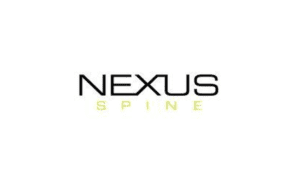 Nexus Spine announced today that it began the beta launch of its Stable-C cervical interbody fusion implants with integrated anchoring blades.
Nexus Spine announced today that it began the beta launch of its Stable-C cervical interbody fusion implants with integrated anchoring blades.
Salt Lake City-based Nexus Spine’s latest release adds to its growing line of Tranquil interbody offerings, which includes ALIF, PLIF, TLIF, steerable TLIF, DLIF, and standard cervical configurations.
Tranquil is made of titanium engineered using proprietary compliant mechanism principles to match the stiffness of spinal trabecular bone to encourage rapid stability while minimizing the potential for subsidence, according to a news release.
Dr. Kirk Clifford performed the first beta surgery with Stable-C at Community Hospital in Grand Junction, Colorado on July 12, 2022.
“Stable-C is an incredibly elegant system,” Dr. Clifford said in a news release. “The integrated anchoring blades were easily deployed in one step by simply rotating an instrument that attaches to the inserter. I found it to be a big improvement over standard systems that use separate fixating components that add time and fiddle factor to my surgeries. I have been using various configurations of the Tranquil product line for quite some time and have experienced excellent results.
“My patients report early postoperative clinical improvement with radiographs that demonstrate rapid Tranquil integration and dynamic stability. I am excited to add Stable-C into my practice.”
Dr. Jeffrey Hoskins of the Orthopaedic Institute of Dayton, Ohio, designed Stable-C to combine intraoperative ease of use with robust fixation.
Tranquil’s compliant mechanisms mimic nature by providing motion and force transmission through flexibility rather than from the traditional rigid-body joints to enable bio-friendly, synthetic materials like titanium to perform more like surgically treated tissues at the macro and microscopic levels.
Nexus Spine said the approach utilizes modern mathematical modeling, 3D finite elemental analysis and 3D printing to drastically improve the way that spinal implants perform.
“I believe we accomplished our goals with the recent tweaks we have made to the system,” said Dr. Hoskins. “The anchoring and deployment design features are a perfect complement to the inherent advantages of the Tranquil matrix. I expect my Stable-C patients to do extremely well.”